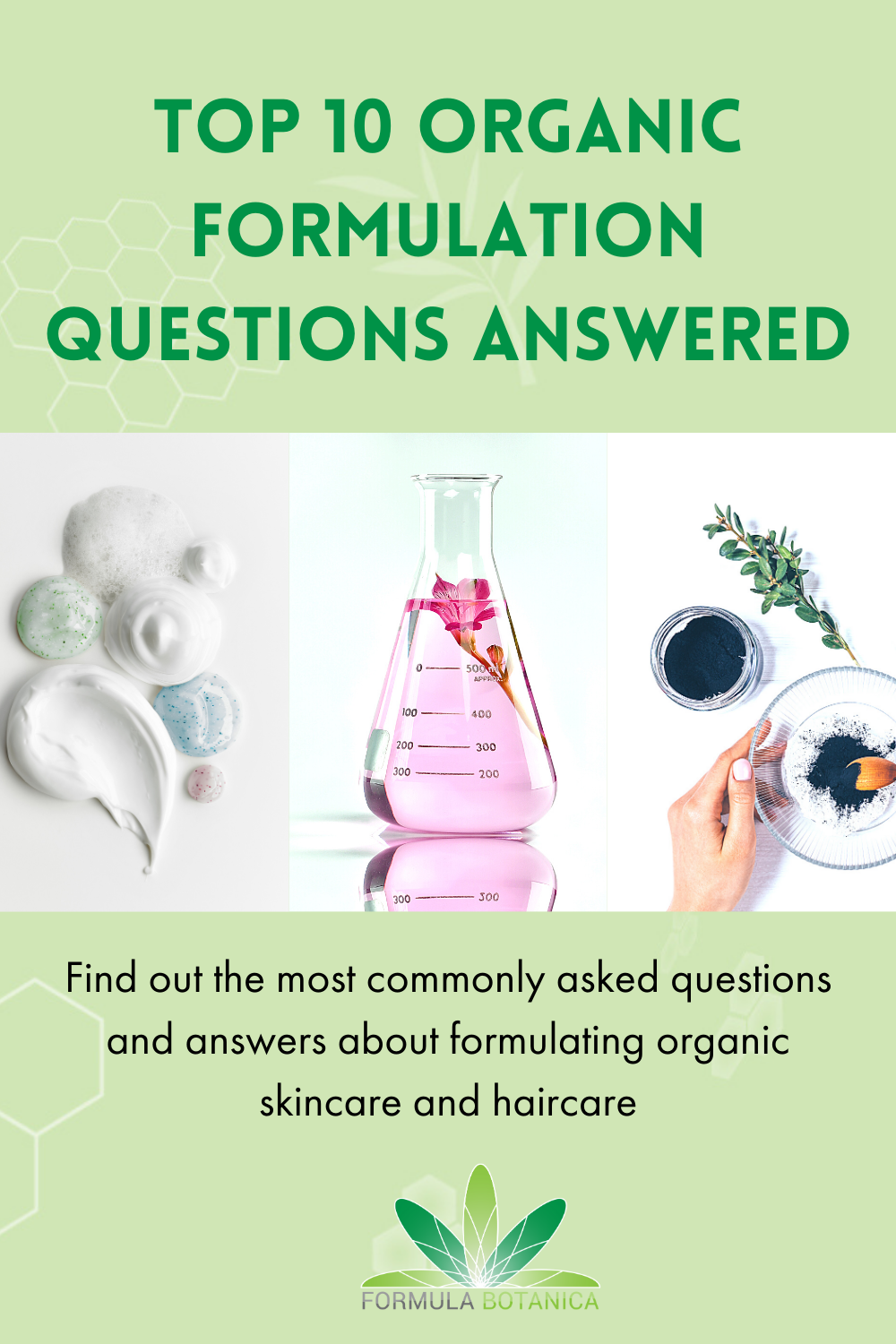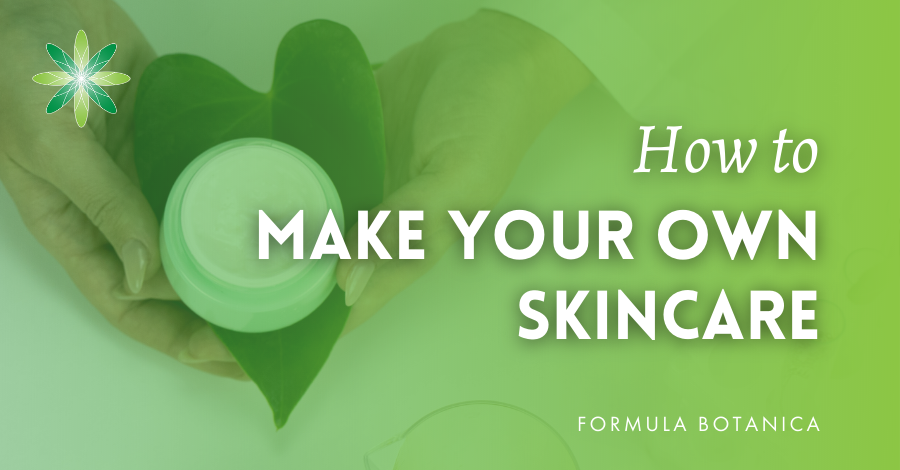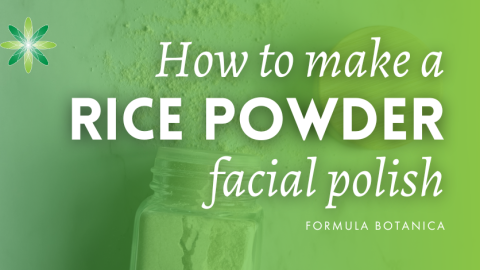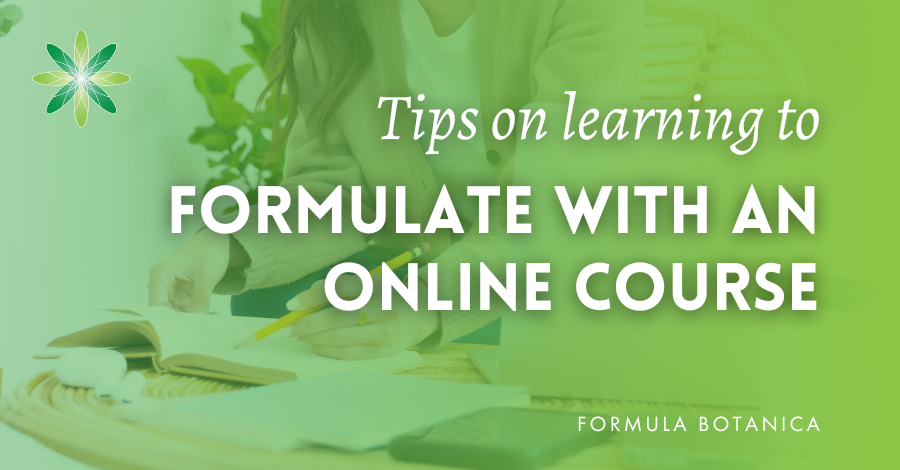Over the years, this blog has become a major source of natural organic formulation tips and expertise for our own students as well as natural formulators across the world. Here, and in our online classrooms, we have noticed that some questions about organic formulation are posed over again and have made it into our ‘hall of fame’ of FAQs.
To help everyone searching for answers, we’ve compiled our top 10 FAQs on natural, organic formulation. We give the short answers here as well as link to our in-depth articles on key topics such as preservatives and emulsifiers, and the definition of natural ingredients.
Bookmark this page as you will most likely need it for reference. If you have a question that you feel is common to others in natural and organic formulation, do let us know by posting a comment below.
The Top 10 FAQS
- Does this formula need a preservative?
- Where can I purchase natural, organic formulation ingredients?
- Can I swap ingredients out in a formula?
- Which emulsifier / preservative is best in organic formulation?
- What is the shelf life of this product?
- How can I add colour to my lip balm?
- How many drops of essential oils is X%?
- My formulation went wrong, can you help me?
- I live in a hot climate and my product melts. What should I do?
- Is this ingredient natural?
1. Does this formula need a preservative?
The safe preservation of your cosmetic products is one of the most complex and critical aspects of natural formulation. So it is our #1 FAQ for good reason. It is so important a topic that at Formula Botanica we run a Certificate in Natural Cosmetic Preservation. Here, we give the short answer, but on the site, we’ve longer, comprehensive articles on the issue so we urge you to take time to follow the links and read up all you can.
First, the short answer: if your cosmetic product contains water, it definitely needs a preservation system and that might need one or a combination of preservatives to cover all bases. You need to preserve water-containing formulations even if are making them for yourself or family and friends. If your product is anhydrous – meaning it does not contain water or water-based ingredients such as hydrolats, gels like aloe vera gel, or compound ingredients that include water – then strictly speaking, it may not require a perservative. Products formulated only with butters, waxes, oils and other ester- and lipid-only ingredients do not contain water and therefore have no pH to measure. So, no pH to measure is an indication that there is no need for a preservative. Do note that most preservatives, especially natural preservatives are sensitive to pH and may work within a very narrow pH spectrum.
However, if there is a chance that your anhydrous product may come into contact with water or be contaminated in other ways, then you will need to add a preservative. Many scrubs and body butters are contained in wide, open-neck jars and tubs which can easily be contaminated by fingers dipping in or from water splashes. If this is your product, then research viable preservatives; there are some broad spectrum, lipophilic (oil-dispersed) natural preservatives on the market.
Start with the premise that your product is likely to need a preservative and do your research to find out if that is the case and which preservation system is most appropriate. Do note that the risks to your business and your customers’ health of not including a preservative in your cosmetic products far outweigh the risks of using a preservative. If in any doubt about preserving your natural products, speak to a qualified cosmetics’ safety assessor or lab in your country.
The links below provide a wealth of information to learn about natural preservation.
Everything you wanted to know about natural preservatives
How is this formulation preserved?
16-Point checklist on choosing a natural preservative for skincare
5 Reasons why your natural formulations need preserving
When even Phenoxyethanol fails: the Liz Earle recall
2. Where can I purchase natural, organic formulation ingredients?
Fortunately nowadays, with the natural and organic beauty industry booming, there are a growing number of suppliers of natural ingredients for organic formulation. Take a look at the end of some of the formulation posts on this blog to find suggested suppliers of ingredients for each formula. We generally list suppliers in the EU and the States and most will ship internationally.
Our Skincare Entrepreneur Mastermind Facebook group has suppliers listed in the files. The group’s community offers help willingly as well and so just use the search bar to look for suggestions.
Finally, sign up for our Free Sample Class in Organic Formulation which comes with a short list of some suppliers we recommend.
And listen to our podcast:
Episode 33: Sourcing sustainable organic skincare ingredients
3. Can I swap some ingredients out in a formula?
Yes and no. This is a tricky question with no clear-cut answer. First ask yourself: What do I want from my product? Answer that and you can research replacement ingredients to find out if they will deliver the same desired result.
Natural organic formulation is a complex branch of cosmetic science. In fact, natural ingredients often tend to be more complex a mix of constituent chemicals. Rose essential oil for example is said to have well over 200 identified chemical components.
Sometimes, it can be easy to swap an ingredient, especially if it is there for aesthetics or preferences such as colour and scent. For example, instead of neroli hydrolat in a facial toner, you may wish to use rose or chamomile. Similarly, in a balm or lip salve, you may wish to use different waxes or carrier oils. But be aware that waxes and carrier oils have differing properties and roles to play and are worlds of research in their own right. Some waxes make harder products, while carrier oils for example each have unique properties suited to different types of skin and cosmetic.
It is not so easy to swap functional ingredients such as emulsifiers (see FAQ#4) or preservatives (see FAQ#1). Natural preservatives’ efficacy is highly sensitive to pH change and they tend to work in a narrow pH range that might not suit your formula or its ingredients. You need to research them to decide which performs best in your formulation. Likewise, humectants are vastly different from each other, and can’t simply be swapped.
It is not possible to say that swapping one for another will result in the same look, feel, efficacy, safety and stability of your organic formulation. Formula Botanica courses teach our students to be enquiring and research their ingredients thoroughly to understand how they work in a given formula.
We also encourage natural formulators to experiment and, based on their research, try swapping out ingredients for others. By observing your formulas and through trial and error, you will learn how your chosen ingredients work optimally. If you intend to sell your products, you will of course need them to undergo stability testing and if they contain water, challenge testing too. Your own informal tests though will arm you with the knowledge of when and why you can swap ingredients.
We have an entire article on replacing natural ingredients and these blog posts on some key, functional ingredients may help guide your choices on whether to replace one ingredient with another.
The @FormulaBotanica top 10 FAQs on natural and organic skincare formulation answered. From natural preservatives to weighing essential oils. #naturalformulation #cosmeticformulation #makingskincare Share on XHow to swap natural cosmetic ingredients in your formulations
How to research cosmetic ingredients for organic skincare
Everything you wanted to know about natural and organic emulsifiers
The Formulator’s Guide to Natural Humectants
16 Point Checklist to choosing a natural preservative
6 Vegan waxes for organic cosmetic formulations
How to work with natural cosmetic waxes
10 Best zero waste oils for skincare and haircare
4. Which emulsifier/preservative is the best in organic formulation?
We wish we could say there is a single magic emulsifier and preservative for each and every organic formulation. That would make our lives as natural formulators so easy! A great deal of our teaching at Formula Botanica centres on these two categories of ingredients.
Emulsions are formulations that need care, patience and a lot of trial and error to master. But, opt for the right emulsifier for the job and your chances of creating a professional, stable and attractive product improve. Firstly, ask yourself if you want a sprayable, liquid, firm or very viscous emulsion as that will narrow down your search to the most suitable choice among oil-in-water (O/W) or water-in-oil (W/O) emulsifiers. After that starting point, we urge you to research the type of product you wish to make and check to see if its individual ingredients are compatible with your chosen emulsifier.
We list our in-depth articles on natural preservatives in FAQ #1. Below, are some useful links to our resources on choosing and working with natural emulsifiers. We also test out emulsifiers and compare them.
Keep an eye on suppliers’ sites as new, natural emulsifiers are coming on the market all the time; many are palm-oil free, Ecocert and Cosmos certified and vegan, and can create innovative emulsions ranging from gel to milk to sprayable and light. Emulsification and emulsifiers are a fascinating deep dive to take and we’ve many graduates who list them as their favourite ingredients.
17 points to consider before choosing an emulsifier
Everything you wanted to know about natural organic emulsifiers
How to make a natural emulsion with Montanov 202 (palm-free) emulsifier
Solubiliser vs Emulsifier: which one do you need in your formulations?
How to make an organic sprayable lotion with Sucrose stearate
How to make a hot-cold procress emulsion
Why beeswax is not an emulsifier
How to make a natural cream cleanser with PolyAquol 2W
How to make a natural emulsion with Xyliance
How to make a natural emulsion with Vegetal
How to make a natural emulsion with Olivem 900
How to make an organic oil-in-water emulsion with Olivem 1000
5. What is the shelf life of this product?
The only way to know for certain the shelf life of a cosmetic product is to have it safety and stability tested by a qualified safety assessor. The safety test examines the formula not only to determine you are using safe levels of the individual ingredients but also their compatibility and that when combined they produce a safe product. Armed with this knowledge, a safety assessor can submit your product to stability testing and taken together the two tests determine the shelf life of your product. In fact, some safety assessors bundle the two tests and will not release safety assessments without also doing their own stability tests on your products.
Of course, this level of surety may be not needed when you make trials of your formulas and want a rule of thumb idea about shelf life. In this case, find out the shelf life (expiry dates) of all your ingredients. Ask your supplier for the information. Assume that the shortest lifespan is your benchmark for the entire product. Do not use this method for any product you intend to sell. You must subject your final formulations to rigorous, documented stability testing.
You don’t always need to pay for a lab to carry out stability testing however. Our Certificate in Cosmetic Stability Testing trains you on some 20 types of test you can carry out yourself. It covers the tests you can easily and inexpensively perform in your artisan cosmetics lab in order to ensure that your products are stable and ready for sale.
Certificate in Cosmetic Stability Testing
3 Reasons all Skincare Products must undergo Stability Testing
6. How can I add colour to my lip balm?
The mainstream cosmetics industry views colorants as additives used in trace amounts to impart colour to a product. Natural and organic formulation tends to regard colour less as an additive and more as an inherent property of the raw ingredients used. For instance, cold-pressed, unrefined sea buckthorn and buriti oils are naturally a gorgeous deep orange hue. Similarly, many unrefined organic butters and waxes are colourful; take pequi fruit oil (solid at room temperature) or green tea wax for example.
At Formula Botanica we encourage our students to celebrate the colour of natural ingredients and to think about which oils, butters and waxes to select as colorants as well as for their skin-beneficial properties or functional role in a formula. If you wish to explore a rainbow of vibrant natural colourants to use as additives, you can research also ingredients such as glycerites, various botanical extracts such as dried powders from roots and barks, tinctures and cosmetic grade dyes from all sorts of parts of plants. Many will have been used as botanical dyes and colourants in food and cosmetics for centuries.
Our post on 38 botanical colourants is a good resource to search for options. Do note that not all our suggestions are lipophilic (oil soluble) and one or two are toxic when ingested so will not be suitable for lip balms or lipsticks. But as you can see, there are a host of innovative ways to add natural colour to not only lip balms but other cosmetics too.
7. How many drops of essential oils is X%?
This is an impossible question! You might have worked out why it could even be called a trick question, but it is one we come across regularly. For a start, you can’t work out the percentage of something you don’t know the total of. Are we talking X per cent of 100g, 200g, 1kg for instance? The question has muddled up two queries we come across, as well as a common misconception.
The questions are: How do I work out a percentage-based formula, and what does a given number of drops of an essential oil weigh? The real issue behind this question is that of using drops in a formula instead of using weight, which a big no.
We cover percentage calculations and weight to percentage maths in our Diploma in Organic Skincare Formulation with ample examples. It is vital to work out the percentages of all your ingredients from a weight formula so you can replicate it and scale it up if you need to.
Essential oils and any allergens they contain must be worked out accurately in percentages. (Aside: the EU requires certain allergens to be listed after the product’s INCI list of ingredients and be visible on packaging at the point of sale.) Most essentials oils have dermal limits depending on their constituent chemical components and you need to be accurate in weighing them out so you can calculate totals of any allergens in your formulation. These are not measures that can be left to chance – or to vague amounts in drops.
Many DIY formulations you find on the internet talk in terms of drops of essential oils and mention, for example, 20 drops of an oil being the equivalent of say 1.0g of the oil. However, every drop can be a different weight and every dropper spout a different size. An oil’s specific gravity varies from supply to supply and batch to batch even if the same essential oil. As you can see, 20 drops will rarely, if ever, weigh the same. Plus, there are other variables to factor in that affect drops.
We cover all this and more in our extensive post which is essential reading if you have ever asked a question about using drops in cosmetic formulation:
Why you should NEVER measure essential oils in drops
8. My formula went wrong, can you help me figure out what happened?
Let us pose you a question by way of an answer. Did you write down your formula (in weight or percentages) carefully and did you make notes about the method of manufacture and your observations along the way? At Formula Botanica we train our students to become keen observers and meticulous in writing up their formulation trials. There is no way we can help sort out a formula for you and give you a clear cut answer about why a formulation went wrong. There are just too many permutations. Even temperature, humidity and pressure can make a difference to a formulation.
If you take notes of each trial, you have a reference to compare new trials against and over time you will work out what step, process or ingredients caused your formulation to fail. Emulsifiers often cause problems either because the wrong one for the job was chosen, or because the blending of the phases was carried out wrongly (phases were too hot or cold, carried out too quickly and so on). A split emulsion is usually due to the wrong balance of oils to water components and a mismatch of emulsifier. Balms often fail because their texture is too grainy or they are too runny. The graininess can be caused by speed and not taking enough time to allow slow cooling while blending and stirring to a trace. Viscosity in balms is down to the balance of waxes to oils and butters.
Our online classroom for our students and our public Facebook group Skincare Entrepreneur Mastermind are great resources to search for common formulation problems. If you have had the issue, someone else is bound to have too.
Here’s a brief checklist to working out what might have gone wrong in a formula:
- Research your ingredients carefully; check supplier documentation for information about ingredient properties, recommended percentage usage, compatibility with functional ingredients such as emulsifiers and preservatives, its pH and so on.
- Document every trial and include date, time, batch, temperatures and observations.
- Write down new observations after changing any aspect of your formula or processes and compare trials against your notes.
- Carry out stability testing to see how a product performs over time.
- Ask fellow skincare entrepreneurs over in our Facebook group
See our posts:
4 Signs of Product Instability
How to Make Natural Skincare Products: A Step-by-Step Guide
Everything you wanted to Know about Natural Emulsifiers
How to Research Cosmetic Ingredients for Organic Skincare
9. I live in a hot climate and this product melts, what should I do?
Reformulate it. This is a short answer and we appreciate it might take a good few trials and tests to get your formulation stable in hot and/or humid climates. The formulations we post on this blog are mostly created at ambient room temperature in the northern hemisphere but most should be stable at higher temperatures.
If you are selling the product, think about where the bulk of your customers live and formulate it accordingly. Ensure you provide usage and storage instructions on your labels and packaging. Be aware that cosmetics that pass stability tests should perform as expected in most climates if used as instructed. Stability tests will determine how your product performs over a wide temperature range. See FAQ #5 for details.
Anhydrous formulations such as balms, body butters, lip balms and shower and hair bars use a combination of waxes, butters and oils. The waxes add hardness and so the best place to start adjusting your formula is to increase their percentage and lower that of the carrier oils and butters with low melting points. With careful formulation and with the optimal choice of butters, waxes and oils, you can create products that are stable to around 35-40 degrees centigrade.
A good informal way to see how stable a product is in transit, where it will undergo rough handling and different temperature and pressures is to mail it to a friend overseas. They can let you know how it looks, feels and performs on arrival.
10. Is this Ingredient Natural?
In the final spot comes one of our favourite FAQs. You may have come across ingredient names such as Caprylic/Capric triglyceride, Sodium ascorbyl phosphate or Ricinus communis and think that the ingredients are not natural. The first is an emollient made from extracts of coconut oil; the second is a naturally-derived form of Vitamin C; and the third is Castor oil. These are the INCI names of these ingredients and the first things to research in your quest for natural.
The International Nomenclature of Cosmetic Ingredients (INCI) is listing of unique identifiers for cosmetic ingredients drawn up by the Personal Care Products Council. The identifiers are in combinations of Latin, English and scientific names for ingredients and are used worldwide. However, you will need to research further as sometimes the INCI name can be the same for both natural and synthetic versions of an ingredient.
Propylene glycol, for example, is a colourless, odourless liquid used in cosmetics as a humectant and penetration enhancer. What the INCI name does not tell you is that Propylene glycol can be derived from petroleum, natural gas or natural, vegetable sources. You need to read your suppliers’ website information carefully, and ask for ingredient documentation such as the Certificate of Analysis (COA) and Material Safety Data Sheet (MSDS/SDS) to be sure an ingredient is natural.
Then, there is the question of what is natural? As a natural formulator, you will need to decide what ‘shades of natural’ ingredients you are willing to accept and use in your formulations. Natural has no binding definition when applied to cosmetics and some brands use the word even when only a small percentage of a formulation might be in line with your perception of natural.
Natural can be used for a totally, unprocessed ingredient straight from nature (dried lavender seeds, for example); those extracted and created from natural, botanical matter by mechanical means such as fruit stone scrub particles or cold-pressed carrier oils; nature-derived ingredients, such as the Vitamin C powder we mentioned above; or nature identical but actually synthetically created to mimic the botanical form. When you ask whether an ingredient is natural, you need to decide what you mean by natural.
These two episodes of our Green Beauty Podcast will help you form your opinion on what is natural and also help you dig behind the chemical names of ingredients.
Episode 1: What does natural skincare mean?
Episode 2: Are you looking for chemical-free ingredients?
See also: How to research cosmetic ingredients for organic skincare
FREE TRAINING
Learn how to become an
Organic Skincare Formulator
FREE TRAINING
How to become an
Organic Skincare Entrepreneur
FREE TRAINING
How to become an
Organic Skincare Entrepreneur
Leave us a comment

Liz was Formula Botanica’s Content Coordinator between August 2020-2024. Liz worked as a professional blogger, journalist and site developer for many years and was also part of the Formula Botanica student community. Read more about the Formula Botanica Team.


























